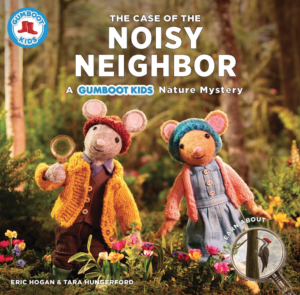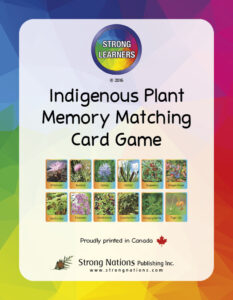The Science curriculum for Grades 1 to 4 provides many opportunities for students to demonstrate curiosity and a sense of wonder about the natural world around them. Observing, recording, sorting, and classifying information are just some of the detective skills that they can develop to help them identify simple patterns and make connections.
In this article, I will briefly describe a few learning strategies, activities, and resources that could be used to help your students experience and interpret their local environment.
NATURE DETECTIVES SKILLS ACTIVITY IDEAS
Materials (for each student)
• a pencil
• a wax crayon with the paper covering removed
• a piece of string that is one metre long
• a plastic magnifying lens (an inexpensive purchase at a dollar store)
• a notepad made of blank paper stapled together
• a zippered plastic bag
Procedure
• Explain to the students that they are going to make detective kits to use inside and outside of the classroom.
• Distribute one bag to each student (names labelled in permanent ink).
• Have the students store their items in the bags.
• When the bags are zipped closed, have each student turn to a pre-determined partner and discuss what they think the items could be used for (1 minute).
• Have some of the students share their thoughts with the larger group.
• Collect and store the detective kits in a tub or on a shelf until needed.
Detective Work in the Classroom and on the School Playground
The following are a few of the many possible uses for the student “detective kits.” The activities can be modified and adapted to match your particular curriculum focus, the time of year, and the skill level of your students.
Note: The skills for each playground lesson should be introduced and practised several times over several days before you take the students outside (for example, making a sound tally). Make sure that the students are clear about the purpose of the lesson and the behavioural expectations, and provide adequate adult supervision and support to make the activity a great learning experience.
Tallying and Graphing Activities
Activity 1: Introductory Lesson
• Have the students sit in a circle on the classroom floor.
• Ask them to remove one shoe and place it in the middle of the circle.
• Help the students sort the shoes into two groups: shoes with laces and shoes with no laces.
• Draw a T chart on the chalkboard with the headings “laces” and “no laces.”
• Help the students count the shoes in each group.
• Tally the results under the two headings.
• Have the students count the tallies (counting by 5s) under each heading and then record the totals in numerals.
• Repeat the process with different sortings (by colour, by brand, etc.)
Activity 2: Living and Non-living Things
• Walk the students outside to the playground and have them sit in a circle on the ground. Distribute the detective kits.
• Have the students stand and take five paces back from the circle.
• Have the students use their strings to form circles on the ground and, using their magnifying lenses, examine the area within their circles for living things (grass, insects, worms, etc.) and non-living things (stones, sticks, etc.).
• Have the students make a T chart on their notepads with the headings “living” and “non-living”. Have them tally their findings.
• When the students are finished recording have them return to the circle space and report out on their results.
Activity 3: Living and Non-living Sounds
• Walk the students outside to the playground and have them sit in a circle on the ground. Distribute the detective kits.
• Have the students sit in silence for one minute and listen to the sounds around them. Have them tally the number of sounds that they hear on their notepads.
• Have the students count the sounds that they recorded and then share the results with everyone.
• Help the students identify the kinds of sounds that they heard (made by living things: dog barking, voices, bird song, etc.) (made by non-living things: wind, engine noises, etc.)
• Have the students draw a T chart on their notepads with the headings “Living” and “Non- living.”
• Have the students sit in silence for one minute and tally the sounds they hear under the correct headings.
• When the students have finished recording, have them turn to the person sitting next to them and share their observations.
Activity 4: Living Things (for playgrounds with trees)
• Walk the students outside to the playground and have them sit in a circle on the ground. Determine that they understand that trees are living things and that they know the difference between deciduous and evergreen trees. Distribute the detective kits.
• Have the students draw a T chart on their notepads. Draw a leaf for one of the headings and a cone for the second heading.
• Walk the students around the playground and have them tally the trees under the correct headings.
• Return to the circle and discuss their findings.
Printmaking Activities
Activity 1: Introductory Lesson
• Have the students sit in a circle on the classroom floor.
• Explain that the surfaces of objects feel different to the touch. Some surfaces might feel smooth, others might feel rough, fuzzy, ridged, or bumpy.
• Demonstrate making wax crayon rubbings of some things in the room that have smooth, uneven, and rough surfaces.
• Distribute their detective kits.
• Have the students create rubbings of some of the surfaces in the room in their notepads (five minutes).
• Have the students return to the circle and share their printmaking with the group.
Activity 2: Structural Features of Living Things
• Have the students sit at their desks facing a chalkboard or whiteboard.
• Distribute their detective kits.
• Have them take out their pencils and their notepads.
• Conduct a directed drawing lesson of a deciduous tree that you are familiar with: you draw a tree on the chalkboard as they follow along in their notepads. Discuss and label the structure of the tree (roots, trunk, branches, leaves). Print the name of the tree as a caption underneath the drawing.
• Provide each student with a leaf from the actual tree. Have them examine the leaves with their magnifying lenses.
• Have the students create rubbings of the leaves in their notepads.
Activity 3: Structural Features of Living Things (for playgrounds with trees)
• Walk the children outside to the playground and have them sit on the ground in a circle. Distribute the detective kits.
• Walk the students around the playground and have them examine the bark of several trees with their magnifying lenses.
•Have them make rubbings of the bark.
• Return to the circle and discuss the results of their work.
Predicting Activities
Activity 1: Introductory Lesson
• Have the students sit in a circle on the classroom floor.
• Take the string out of one of the detective kits and stretch it out to full length.
• Ask a student volunteer to stand up.
• Ask the students to predict whether the volunteer is taller or shorter than the string. Measure the volunteer to check their predictions.
• Repeat this activity several times by having students make predictions about the length, width or height of nearby objects such as chairs, tables, windows, etc.
• Discuss the results.
Activity 2: Making Predictions Based on Prior Knowledge
•Have the students seated at their desks.
• Help the students choose several things in the classroom to measure. List the items on the chalkboard. By a show of hands, have all the students predict whether each item is longer or shorter than the strings in their detective kits. Tally their responses on the chalkboard.
• Distribute the detective kits and have the students take turns measuring the items. • By a show of hands, tally the results of the measurements for each item.
• Compare the results with their predictions and suggest possible reasons for their findings.
Activity 3: Making Predictions Based on Prior Knowledge (for playgrounds with trees)
• Walk the students outside and have them sit close to a playground tree. Explain that the measurement around the trunk of a tree is called its circumference.
• Ask the students to predict whether the circumference of this tree is larger or smaller than the length of the string in their detective kits.
• Measure the tree with one of the strings to check the accuracy of their predictions. Discuss the results.
• Distribute the detective kits.
• Walk the students to several other trees and repeat the process. Have the students take turns predicting and measuring.
BOOKS AND RESOURCES
 The Case of the Disappearing Castle The Case of the Noisy Neighbor
The Case of the Disappearing Castle The Case of the Noisy Neighbor
by Tara Hungerford and Eric Hogan
Firefly Books
32 pages, ages 5 to 9
fireflybooks.com
These two titles are new additions to the popular Gumboot Kids Nature Mystery Series, based on the award-winning CBC
television series Scout and the Gumboot Kids. Each book features two characters, Scout and Daisy, who work together to examine a series of clues to solve a nature mystery. Each story ends with a trip to the library to verify the evidence and two pages of field notes on the subject of the mystery. A nature craft that connects to the story is also included at the end of each book.
Note: The photographic illustrations in these books are brilliant and could provide inspiration for many classroom art and craft projects.
 A Walk on the Tundra
A Walk on the Tundra
by Rebecca Hainnu
Inhabit Books
40 pages, ages 6 to 9
inhabitmedia.com
This story takes place in early August. The tundra, which for most of the year is covered in snow, is now experiencing warmer temperatures and long hours of daylight. Small, colourful flowers and shrubs thrive between the rocky outcroppings and the ground is covered with spongy mosses and lichens.
One morning A-nah-nat-see-akh (grandmother) and her young eer-ngu-takh (grandchild) set off on a foraging trip across the tundra. Along the way, A-nah-nat- see-akh introduces some useful medicinal and food plants. On their return to the village, eer-ngu-takh learns to use one of the plants to make tea for her family on a traditional stone iga (stone cooking platform).
A plant glossary at the end of the book is illustrated with close-up photographs of six tundra plants with a brief description of the plants and their uses. A glossary of Inuktitut words and phrases is also included.
 Marine Memory Matching Cards
Marine Memory Matching Cards
Life Cycle (salmon) Memory Matching Cards
Indigenous Plants Memory Matching Cards
Strong Nations Publishing
25 cards, ages 5 to 8
strongnations.com
Each deck consists of 24 cards and one instructional card. Playing with these cards can help primary students identify local plant and animal species and work on the following skills: social interaction, recall of information, concentration, attention to detail, and taking turns.
Other Related Resources
A Walk on the Shoreline by Rebecca Hainnu
Inhabit Books
Minerals and Rocks by Kim Tait
Firefly Books
Little Explorer Series by Sarah Grindler
Nimbus Publishing
Be a Nature Detective Series by Peggy Kochanoff
Nimbus Publishing
Nature Detectives—The Living World Science Series by Diane Swanson
Pacific Edge Publishing
ABOUT THE AUTHOR
Brenda Boreham
Brenda has 35 years of classroom experience. She has presented workshops on literacy strategies, and has written a number of resources for teachers. She remains passionate about matching up kids with books.
This article is featured in Canadian Teacher Magazine’s Fall 2024 issue.









